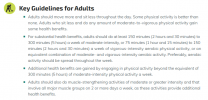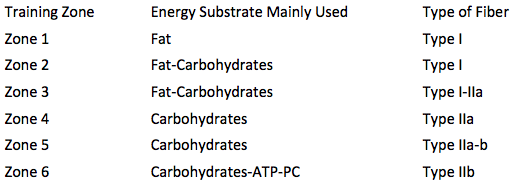These days I personally subscribe (as many here already know) to the zone system outlined by the good folks over at Uphill Athlete
Zone 1: AeT-20% to AeT-10%Zone 2: AeT-10% to AeTZone 3: AeT to LT(AnT)
The ‘catch’ is that ones needs to determine ones AeT. In order of accuracy from highest to least the ways to do this are: Gas Exchange Test | Blood Lactate Test | Talk Test / MAF
the zone 2 talked about in the podcast (which I believe would also correspond with Uphill Athlete zone 2)
I wondered the same. It seems to be a bit fuzzy, because "aerobic" and "anaerobic" are not black and white. There is a huge overlap. The aerobic system contributes even during anaerobic phases and vice versa. And there patterns are different for sedentary folks and experienced athletes.
I think the key metric is measuring blood lactacte levels, as those tell us a lot about which energy system is dominant at a given HR.
Here are some quotes from TFTUA that help with finding the Aerobic Threshold (upper end of Zone 2 and supposedly also MAF).
Zone 1: "Blood lactate concentrations for this intensity should range between less than 1 to around 1.5mMol/L. ." (TFTUA, p. 125)
Zone 2: "Zone 2 intensity requires the maximum output of the fat/oxidative (aerobic) metabolism." (p. 127) "The heart rate of the AeT is reached when the lactate level reaches or exceeds 2mMol/L, or the first stage where the lactate number increases by 1mMol/L." (p. 226 f.)
"we have seen a good correlation between the heart rate that can be maintained while breathing only through the nose or while carrying on a conversation with the blood lactate level of 2mMol/L (the commonly accepted measure of AeT). The caveat here is that this works only for those with good aerobic training backgrounds." (p. 225)
House, Steve; Johnston, Scott; Jornet, Kilian. Training for the Uphill Athlete. Patagonia. Kindle-Version.
So HR at 2mMol/L blood lactate levels should be a good marker for AeT + pace/HR which allows allows for talking or nose breathing for 30+ minutes.
San Millan seems to use the 2mMol/L point, too, though this might have some individual variation , depending on how quickly the lactate numbers increase. As you can see in the following chart from
his article on trainingpeaks.com Zone 2 is not fat-burning only, but also glycogen-burning.
(Side note: He is against using low-carb or Paleo diets - at least for athletes.)
--
So what does that mean? For beginners, I think a "smiling pace" (niko niko) should be about right.
For everyone with some months of endurance traning in the back, the most reliable way would probably be a lactate step test. Otherwise the good ol' talk test or the AeT tests from TFTUA.
According to TFTUA Zone 2 training might be a bit too recovery demanding for high volume trainees. When training daily, they should replace some Zone 2 work with Zone 1 work.
However, San Millan is all for Zone 2 training.
Here is
simple half-marathon plan by San Millan (following a couple of months of 3x 60min per week Zone 2 only).
A typical half-marathon training week for the author as prescribed by the Human Performance Lab at the Anschutz Health and Wellness Center on the University of Colorado Medical Campus.
Monday
Rest
Tuesday
60 minutes at Zone 2; 2×7 minutes at Zone 4
Wednesday
Rest
Thursday
75 minutes at Zone 2
Friday
Rest
Saturday
60 minutes at Zone 2; 2 x 7 minutes at at Zone 4
Sunday
90 minutes at Zone 2
KEY Zone 2: The author’s heart rate zone that builds endurance; 160–165 beats per minute. Zone 4: The author’s heart rate zone that is closer to “race pace”; 175–180 beats per minute. 2 x 7 minutes: Two seven-minute intervals done at heart rate Zone 4.


